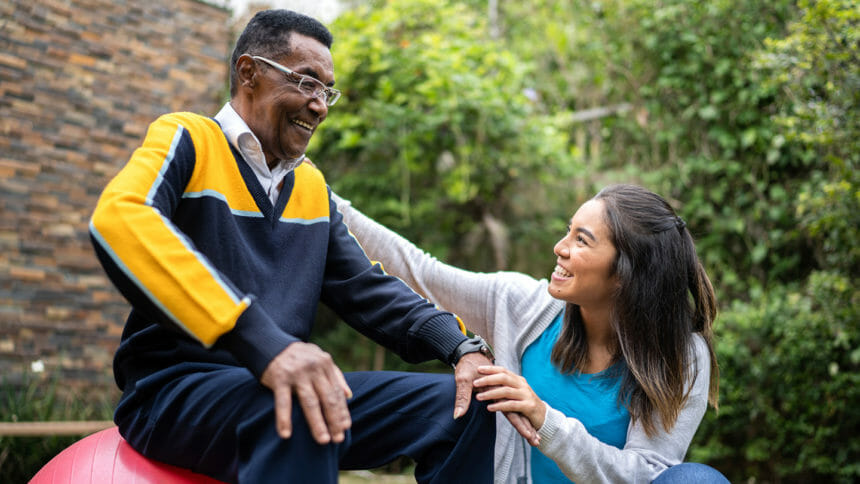
(HealthDay News) — For seniors with surgical repair of a hip fracture, a 12-month home-based, supervised, progressive exercise program improves functioning and physical performance, according to a study published online May 18 in the Journal of the American Geriatrics Society.
Paula K. Soukkio, from the South Karelia Social and Health Care District in Lappeenranta, Finland, and colleagues conducted a secondary analysis of a randomized controlled trial to examine the effects of a 12-month home-based supervised, progressive exercise program on functioning, physical performance, and physical activity. Patients with surgical repair of a hip fracture, aged 60 years or older (mean age, 81 years), were randomly assigned to exercise or usual care (61 and 60 patients, respectively). Lawton’s Instrumental Activities of Daily Living (IADL), the Short Physical Performance Battery (SPPB), handgrip strength, and self-reported frequency of sessions of leisure-time physical activity were examined at baseline and three, six, and 12 months.
The researchers found that during 12 months, the age- and sex-adjusted mean changes in IADL were 3.7 and 2.0 in the exercise and usual-care groups, respectively; changes in the SPPB were 4.3 and 2.1, respectively; and changes in handgrip strength were 1.2 and 1.0 kg, respectively. The change in frequency of leisure-time activity sessions did not differ between the groups.
“It is worthwhile to invest in rehabilitation exercise for older people after hip fracture,” Soukkio said in a statement. “Better functioning benefits the individual and also society.”


